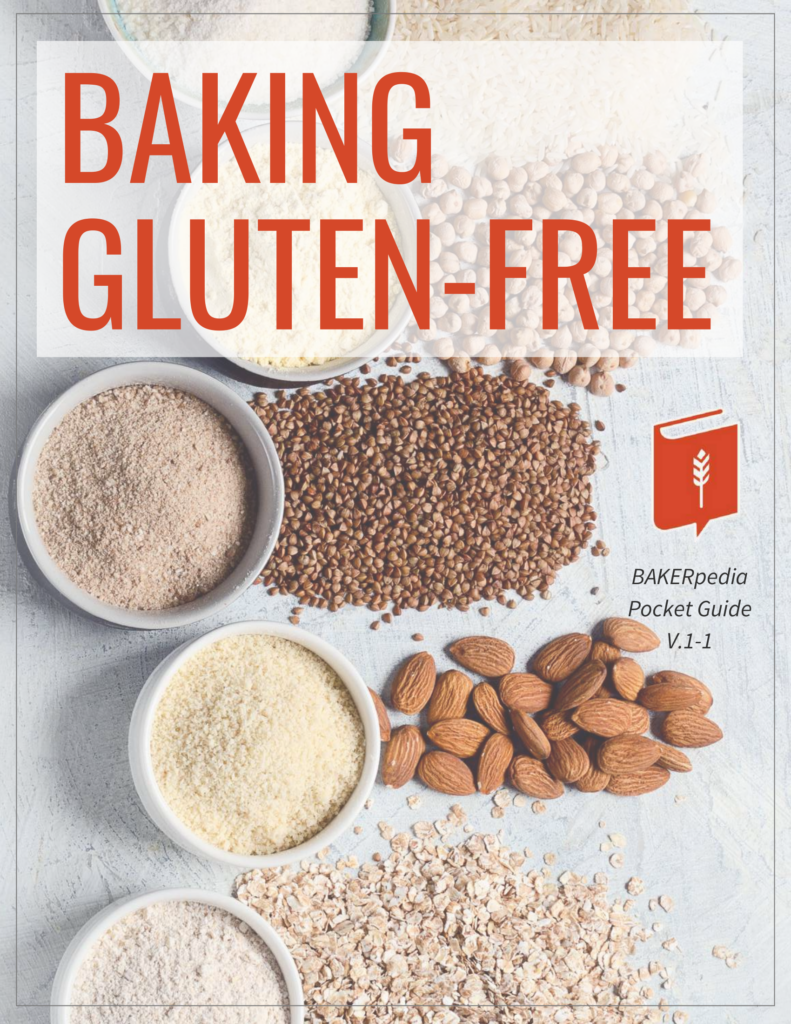Keeping Up with Gluten-Free Trends

As the gluten-free market evolves, bakers face both exciting opportunities and new challenges. Consumers today expect gluten-free products to deliver the same taste, texture, and shelf life as their wheat-based favorites, but they also want innovative, clean-label, and nutrient-rich options. Keeping up with these trends requires a deep understanding of gluten-free baking science and a willingness to adapt to new ingredients and techniques. Let’s break down the latest trends, essential ingredients, and advanced processes to help you stay ahead of the curve and create gluten-free products that satisfy consumers.
The Gluten-Free Market
The gluten-free market is no longer a niche; it’s a booming $10 billion industry that continues to grow every day. Beyond celiac disease and gluten intolerance, more consumers are adopting gluten-free diets for perceived health benefits or lifestyle choices. This shift has increased the demand for better-tasting, more diverse product offerings, including artisan bread, premium pastries, and functional foods with added nutritional value.
Bakers must embrace innovation to stay competitive by offering products that cater to evolving consumer preferences—from ancient grain-based bread to indulgent, gluten-free desserts. Successful bakers know that meeting these demands requires precise formulation and constant attention to emerging ingredients and processes.
Want to learn more? Download the Baking Gluten-Free Pocket Guide:

Download the Pocket Guide now!
Which Wheat Flour Alternatives Should You Choose?
Staying current with alternative flours is vital for modern gluten-free baking. As consumer preferences shift toward whole-food ingredients, the popularity of diverse flour options has surged. In addition to the traditional choices, consider incorporating:
- Chia Flour: Chia offers a high protein, high fiber option for bars and snacks
- Millet Flour: Millet provides a mild, nutty flavor and is rich in essential minerals.
- Quinoa Flour: Adds protein and amino acids, enhancing both nutrition and texture.
- Teff Flour: A nutrient-dense option with a slightly earthy taste, ideal for artisan products.
- Cassava Flour: Offers a neutral taste and smooth texture, making it versatile for various applications.
Crafting blends that balance taste, texture, and nutritional value is essential. Leveraging these emerging flours can position your products as innovative and health-conscious.
The Importance of Hydration
Proper hydration remains critical in gluten-free baking, but new techniques are enhancing moisture retention and product quality. High-hydration doughs, often used in sourdough-style gluten-free bread, improve crumb texture and prolong shelf life. Advanced hydration strategies, such as incorporating water-binding agents like psyllium husk, are gaining traction for their ability to enhance elasticity and reduce dryness.
Functional Ingredients
The role of hydrocolloids and functional ingredients continues to expand as bakers seek ways to mimic gluten’s properties. Emerging trends include:
- New Hydrocolloid Blends: Customized combinations of gums provide improved elasticity and better freeze-thaw stability.
- Plant-Based Proteins: Pea protein, fava bean protein, chia protein, and chickpea flour are gaining popularity for their functional and nutritional benefits.
- Resistant Starches: These offer digestive health benefits while not contributing to net carbs.
Bakers can achieve superior texture and consistency across gluten-free product lines by staying up-to-date with new hydrocolloid technologies.
Soften and Sweeten
Consumer interest in reduced-sugar and healthier fat options is reshaping gluten-free formulations. Bakers are exploring alternatives that deliver sweetness and functionality without compromising quality:
- Natural Sweeteners: Options like coconut sugar, date syrup, and monk fruit provide clean-label sweetness.
- Healthier Fats: Avocado oil and high-oleic sunflower oil offer better nutritional profiles and improve moisture retention.
Balancing these elements ensures that gluten-free products maintain indulgent textures while meeting consumer health demands.
Getting a Rise
Emerging trends in fermentation are transforming gluten-free leavening methods. Long fermentation times enhance flavor complexity and improve dough structure, especially in gluten-free sourdough. Additionally, precision fermentation techniques are enabling better carbon dioxide retention, improving volume without the need for excess chemical leaveners.
Substituting Traditional Ingredients with Gluten-Free Alternatives
Successful substitution goes beyond a simple ingredient swap. Bakers must tailor formulations to specific product categories. For example, using psyllium husk as a gluten replacer in bread improves elasticity, while combining multiple starches ensures optimal crumb structure. Emerging techniques, like using pre-gelatinized starches, help create stable, workable doughs that mimic the handling of traditional wheat-based products.
Gluten-Free Processing
As consumer awareness of cross-contamination grows, bakers must maintain rigorous protocols to ensure gluten-free integrity. Adopting advanced quality control measures and investing in dedicated processing lines are becoming industry standards. Furthermore, innovations in automated handling systems reduce manual touchpoints, minimizing the risk of contamination.
Bakers can also leverage digital tracking systems to monitor batch traceability and guarantee compliance with gluten-free certification standards, providing consumers with the transparency they expect.
Baking for Gluten-Free Success
Bakers need to embrace new ingredients, technologies, and techniques to thrive in the evolving gluten-free market. Staying ahead requires a commitment to research, continuous learning, and adapting to consumer preferences for taste, texture, and health benefits. The Baking Gluten-Free Pocket Guide is an indispensable resource for an in-depth guide to mastering these advanced techniques. It offers formulations, practical troubleshooting tips, and insights to help you stay competitive in the ever-changing gluten-free landscape. Download the guide today!
Want to stay up-to-date with BAKERpedia? Sign up for our newsletter today!

